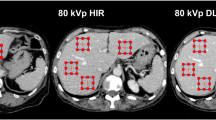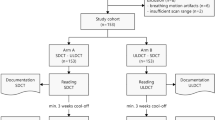Abstract
Purpose
Several factors are known to affect lung ablation zones. Questions remain as to why there are discrepancies between achieved and vendor-predicted ablation zones and what contributing factors can be modified to balance therapeutic effects with avoidance of complications. This retrospective study of lung tumour microwave ablation analyses day 1 post-treatment CT to assess the effects of lesion-specific and operator-dependent factors on ablation zones.
Methods and Materials
Consecutive patients treated at a tertiary centre from 2018 to 2021 were included. All ablations were performed using a single microwave ablation device under lung isolation. The lung tumours were categorised as primary or secondary, and their “resistance” to ablation was graded according to their locations. Intraprocedural pulmonary inflation was assessed as equal to or less than the contralateral non-isolated lung. Ablation energy was categorised as high, medium, or low. Ablation zone dimensions were measured on day 1 CT and compared to vendor reference charts. Ablations with multiple needle positions or indeterminate boundaries were excluded.
Results
A total of 47 lesions in 31 patients were analysed. Achieved long axes are longer than predicted by 5 mm or 14% (p < 0.01) without overall short axis discrepancy. Secondary tumours (p = 0.020), low-resistance location (p < 0.01), good lung inflation (p < 0.01), low (p = 0.003) and medium (p = 0.038) total energy produce lengthened long axes by 4–6 mm or 10–19%. High total energy results in shorter than predicated short axes by 6 mm or 18% (p = 0.010).
Conclusion
We identified several factors affecting ablation zone dimensions which may have implications for ablation planning and the avoidance of complications.
Graphical abstract




Similar content being viewed by others
References
Zheng A, Ye X, Yang X, et al. Local efficacy and survival after microwave ablation of lung tumors: a retrospective study in 183 patients. J Vasc Interv Radiol. 2016;27:1806–14.
Wolf FJ, Grand DJ, Machan JT, et al. Microwave ablation of lung malignancies: effectiveness, CT findings, and safety in 50 patients. Radiology. 2008;247:871–9.
Healey TT, March BT, Baird G, et al. Microwave ablation for lung neoplasms: a retrospective analysis of long-term results. J Vasc Interv Radiol. 2017;28:206–11.
Vogl TJ, Naguib NNN, Gruber-Rouh T, et al. Microwave ablation therapy: clinical utility in treatment of pulmonary metastases. Radiology. 2011;261:643–51.
Chheang S, Abtin F, Gutierrez A, et al. Imaging features following thermal ablation of lung malignancies. Semin Intervent Radiol. 2013;30:157–68.
Abtin FG, Eradat J, Gutierrez AJ, et al. Radiofrequency ablation of lung tumors: imaging features of the postablation zone. Radiographics. 2012;32:947–69.
Kodama H, Ueshima E, Howk K, et al. Temporal evaluation of the microwave ablation zone and comparison of CT and gross sizes during the first month post-ablation in swine lung. Diagn interv Imaging. 2019;100:279–85.
Oshima F, Yamakado K, Akeboshi M, et al. Lung radiofrequency ablation with and without bronchial occlusion: experimental study in porcine lungs. J Vasc Interv Radiol. 2016;15:1451–6.
Santos RS, Gan J, Ohara CJ, et al. Microwave ablation of lung tissue: impact of single-lung ventilation on ablation size. Ann Thorac Surg. 2010;90:1116–9.
Al-Hakim RA, Abtin F, Genshaft S, et al. Defining new metrics in microwave ablation of pulmonary tumors: ablation work and ablation resistance score. J Vasc Interv Radiol. 2016;27:1380–6.
Yamamoto A, Nakamura K, Matsuoka T, et al. Radiofrequency ablation in a porcine lung model: correlation between CT and histopathologic findings. Am J Rooentgenol. 2005;185:1299–306.
Acknowledgements
None.
Funding
This study was not supported by any funding.
Author information
Authors and Affiliations
Corresponding author
Ethics declarations
Conflict of Interest
The authors declare that they have no conflict of interest.
Ethical Approval
For this type of study, formal consent is not required.
Consent for Publication
For this type of study, consent for publication is not required.
Informed Consent
For this type of study, informed consent is not required.
Additional information
Publisher's Note
Springer Nature remains neutral with regard to jurisdictional claims in published maps and institutional affiliations.
Supplementary Information
Below is the link to the electronic supplementary material:
Vendor ex vivo lung ablation zone reference method
Supplementary file1 (TIFF 858 KB)
Rights and permissions
Springer Nature or its licensor (e.g. a society or other partner) holds exclusive rights to this article under a publishing agreement with the author(s) or other rightsholder(s); author self-archiving of the accepted manuscript version of this article is solely governed by the terms of such publishing agreement and applicable law.
About this article
Cite this article
Xu, Y., Padley, S.P.G., Devaraj, A. et al. Discrepancy Between Achieved and Vendor-Predicted Ablation Zones in the Lung: Contributing Factors. Cardiovasc Intervent Radiol 47, 613–620 (2024). https://doi.org/10.1007/s00270-024-03667-3
Received:
Accepted:
Published:
Issue Date:
DOI: https://doi.org/10.1007/s00270-024-03667-3




